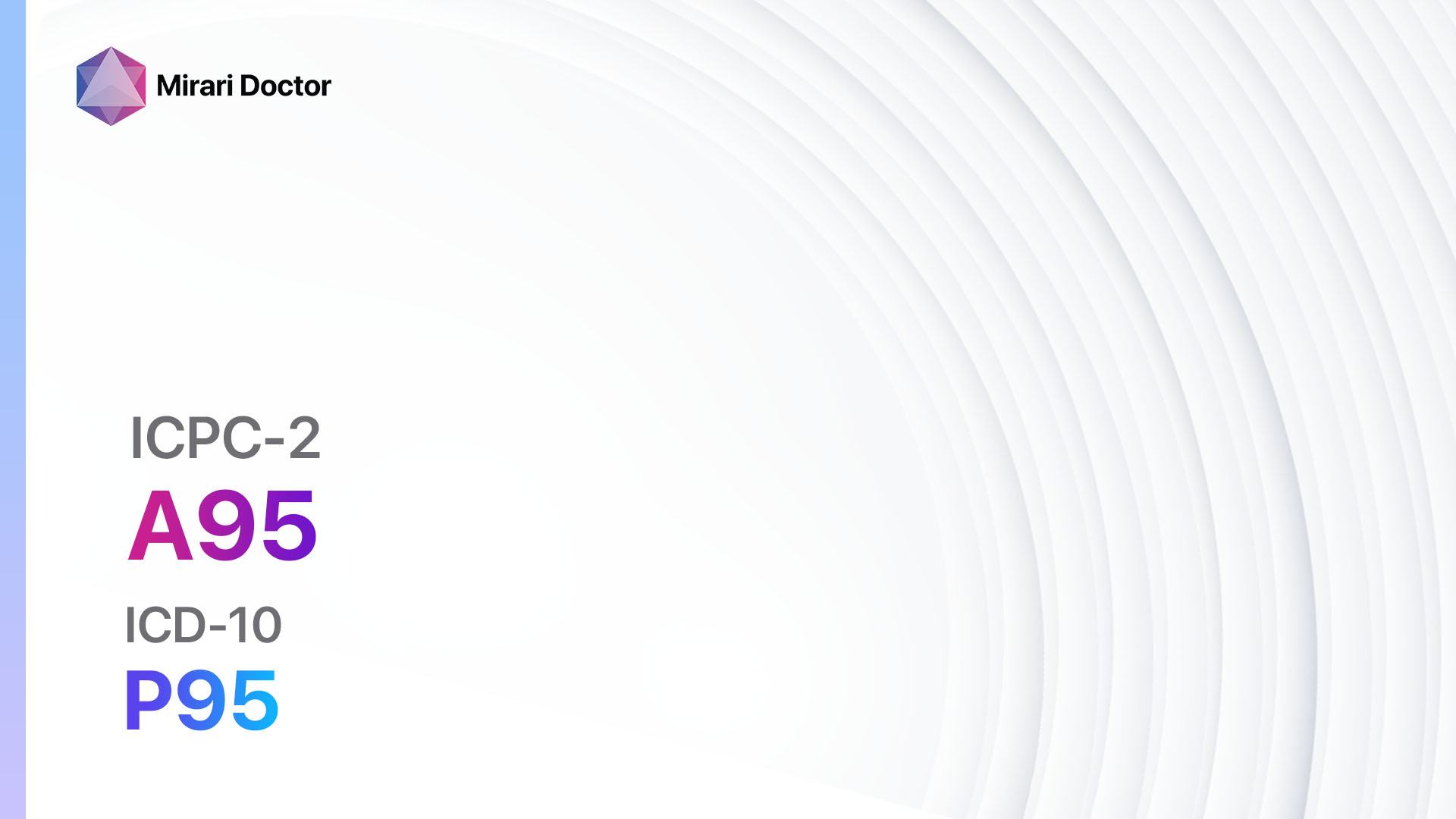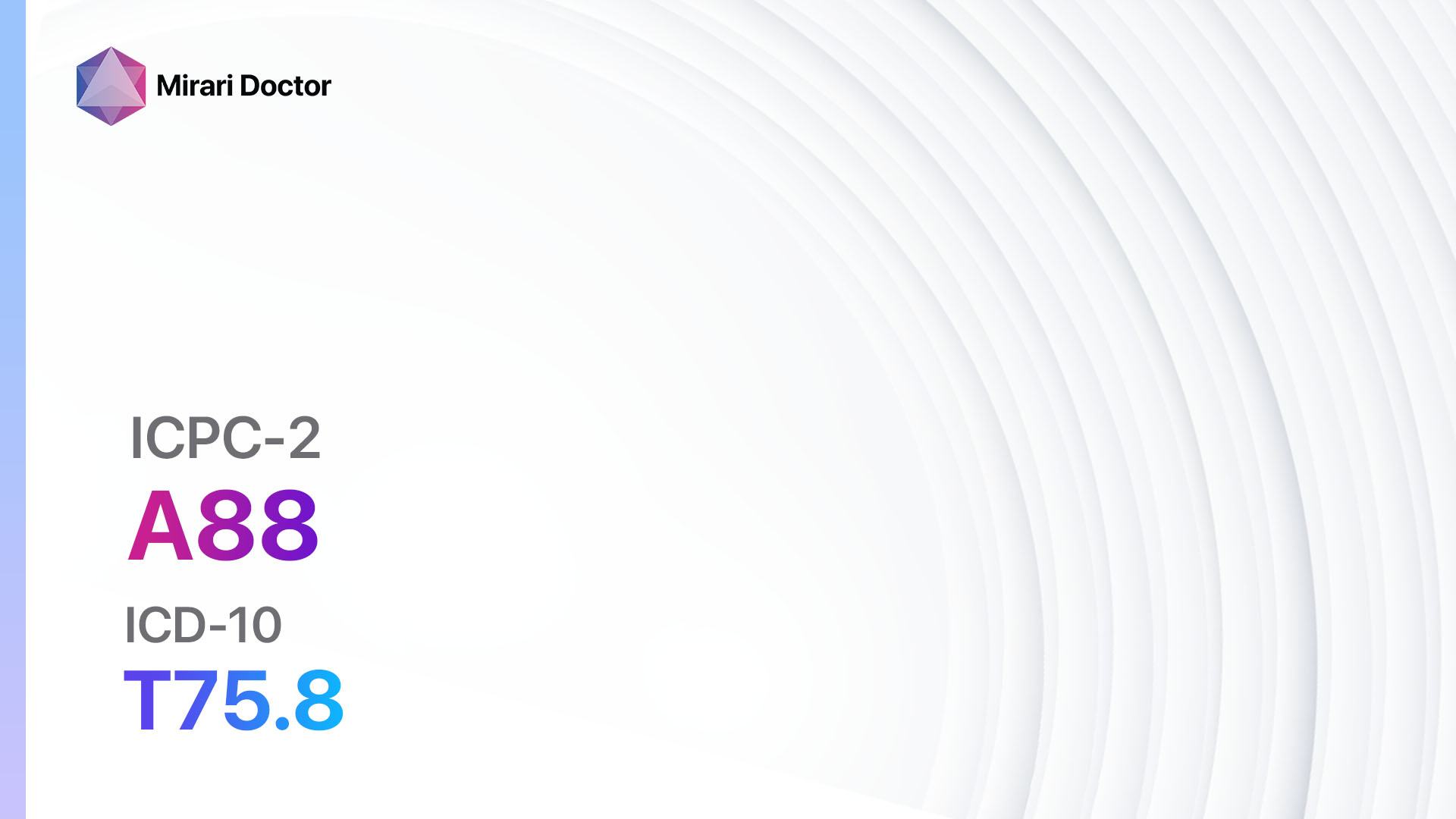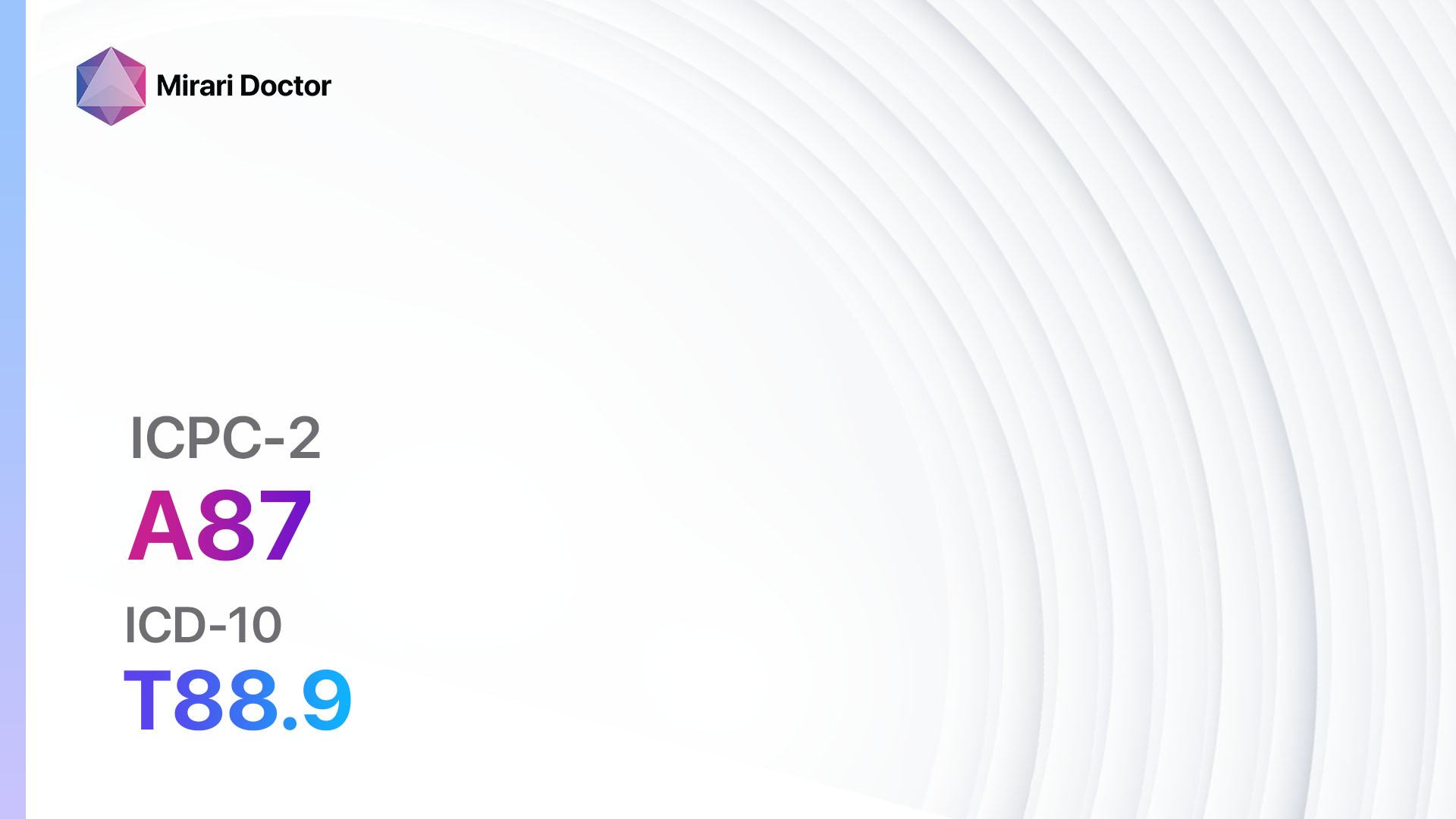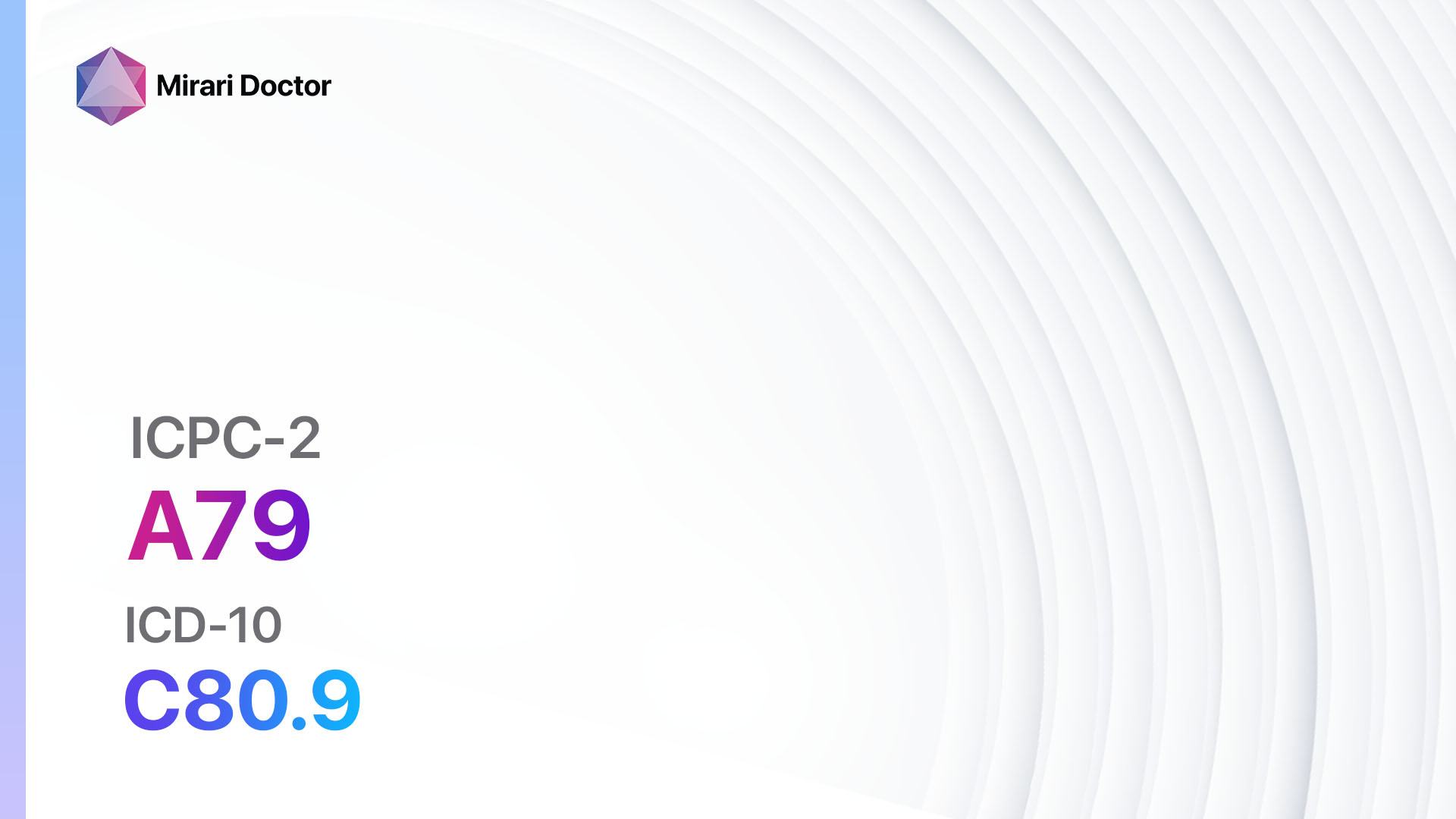
Introduction
Viral diseases are caused by various types of viruses and can affect different parts of the body[1]. Viral disease other/NOS (Not Otherwise Specified) refers to viral infections that do not fit into a specific category[2]. The aim of this guide is to provide an overview of the symptoms, causes, diagnostic steps, possible interventions, and patient education for viral disease other/NOS.
Codes
Symptoms
- Fever: A common symptom of viral infections, characterized by an elevated body temperature[3].
- Fatigue: Feeling tired or exhausted, often accompanied by a lack of energy[4].
- Headache: Aching or pain in the head, which can vary in intensity[5].
- Muscle aches: Discomfort or pain in the muscles, often described as soreness or stiffness[6].
- Respiratory symptoms: Coughing, sneezing, sore throat, or nasal congestion[7].
- Gastrointestinal symptoms: Nausea, vomiting, diarrhea, or abdominal pain[8].
- Skin rash: Redness, itching, or inflammation of the skin[9].
Causes
- Viral infection: Viral disease other/NOS is caused by various types of viruses, including those that do not fit into specific categories[10].
- Transmission: Viruses can be transmitted through direct contact with infected individuals, respiratory droplets, contaminated surfaces, or vectors such as mosquitoes.
Diagnostic Steps
Medical History
- Gather information about the patient’s symptoms, including their onset, duration, and severity.
- Inquire about any recent travel or exposure to individuals with viral infections.
- Assess the patient’s medical history, including any underlying conditions or immunocompromised status.
Physical Examination
- Conduct a thorough physical examination to assess vital signs, general appearance, and specific findings related to viral infections.
- Look for signs such as fever, rash, enlarged lymph nodes, or respiratory distress.
Laboratory Tests
- Complete blood count (CBC): To assess white blood cell count and identify any abnormalities.
- Viral serology: Blood tests to detect specific antibodies or antigens associated with viral infections.
- Polymerase chain reaction (PCR): A molecular technique used to detect viral genetic material.
- Viral culture: Collecting samples from the patient and growing them in a laboratory to identify the virus.
- Other specialized assays: Depending on the suspected viral infection, additional tests may be required.
Diagnostic Imaging
- Chest X-ray: To evaluate the lungs and identify any abnormalities.
- CT scan: Provides detailed images of specific body parts, such as the chest or abdomen, to assess for organ involvement.
- MRI: Uses magnetic fields and radio waves to produce detailed images of the body, helpful in diagnosing certain viral infections.
Other Tests
- Urine analysis: To assess for any urinary tract involvement or kidney dysfunction.
- Stool analysis: To identify any gastrointestinal involvement or viral shedding in the stool.
- Lumbar puncture: In cases of suspected central nervous system involvement, a sample of cerebrospinal fluid may be collected for analysis.
Follow-up and Patient Education
- Provide appropriate treatment based on the diagnosis and monitor the patient’s progress.
- Educate the patient about the importance of rest, hydration, and proper hygiene to prevent the spread of the virus.
- Advise the patient to seek medical attention if symptoms worsen or new symptoms develop.
Possible Interventions
Traditional Interventions
Medications:
Top 5 drugs for Viral disease other/NOS:
- Antiviral medications (e.g., Oseltamivir, Acyclovir):
- Cost: Oseltamivir – $50-$100 for a 10-day course. Acyclovir – $10-$50 for a 10-day course.
- Contraindications: Hypersensitivity to the medication.
- Side effects: Nausea, vomiting, headache.
- Severe side effects: Allergic reactions, kidney damage.
- Drug interactions: None significant.
- Warning: Start treatment as early as possible for maximum effectiveness.
- Analgesics (e.g., Acetaminophen, Ibuprofen):
- Cost: Acetaminophen – $5-$10 for a bottle. Ibuprofen – $5-$10 for a bottle.
- Contraindications: Allergy to the medication, certain medical conditions (e.g., liver disease, stomach ulcers).
- Side effects: Upset stomach, dizziness.
- Severe side effects: Liver damage, gastrointestinal bleeding.
- Drug interactions: Other pain medications, blood thinners.
- Warning: Follow recommended dosage and avoid exceeding the maximum daily dose.
- Antihistamines (e.g., Loratadine, Diphenhydramine):
- Cost: Loratadine – $5-$10 for a bottle. Diphenhydramine – $5-$10 for a bottle.
- Contraindications: Hypersensitivity to the medication, certain medical conditions (e.g., glaucoma, urinary retention).
- Side effects: Drowsiness, dry mouth.
- Severe side effects: Irregular heartbeat, difficulty urinating.
- Drug interactions: Other sedating medications, alcohol.
- Warning: Avoid activities requiring mental alertness while taking sedating antihistamines.
- Cough suppressants (e.g., Dextromethorphan, Codeine):
- Cost: Dextromethorphan – $5-$10 for a bottle. Codeine – $10-$20 for a bottle.
- Contraindications: Hypersensitivity to the medication, certain medical conditions (e.g., asthma, respiratory depression).
- Side effects: Drowsiness, dizziness.
- Severe side effects: Respiratory depression, allergic reactions.
- Drug interactions: Other sedating medications, alcohol.
- Warning: Use caution when operating machinery or driving due to potential drowsiness.
- Antipyretics (e.g., Ibuprofen, Acetaminophen):
- Cost: Ibuprofen – $5-$10 for a bottle. Acetaminophen – $5-$10 for a bottle.
- Contraindications: Allergy to the medication, certain medical conditions (e.g., liver disease).
- Side effects: Upset stomach, dizziness.
- Severe side effects: Liver damage, gastrointestinal bleeding.
- Drug interactions: Other pain medications, blood thinners.
- Warning: Follow recommended dosage and avoid exceeding the maximum daily dose.
Alternative Drugs:
- Herbal remedies: Echinacea, elderberry, and garlic are commonly used for their potential immune-boosting properties.
- Vitamin C: High-dose vitamin C supplements may help support the immune system.
- Zinc: Zinc lozenges or supplements may help reduce the duration and severity of viral infections.
- Probiotics: Certain strains of probiotics may help support the immune system and reduce the risk of respiratory infections.
- Homeopathic remedies: Oscillococcinum and other homeopathic preparations are sometimes used for viral infections.
Surgical Procedures:
- There are no surgical procedures specifically indicated for viral disease other/NOS.
Alternative Interventions
- Herbal supplements: Some herbs, such as echinacea and elderberry, may have potential benefits for boosting the immune system and reducing the severity of viral infections. Cost: Varies depending on the specific supplement.
- Vitamin D supplementation: Adequate vitamin D levels have been associated with a reduced risk of viral infections. Cost: $5-$20 for a bottle of vitamin D supplements.
- Probiotics: Certain strains of probiotics may help support the immune system and reduce the risk of viral infections. Cost: $10-$30 for a bottle of probiotic supplements.
- Steam inhalation: Inhaling steam from hot water or using a humidifier may help relieve respiratory symptoms. Cost: Varies depending on the method used.
- Hydration and rest: Adequate hydration and rest are essential for supporting the immune system and promoting recovery. Cost: Minimal.
Lifestyle Interventions
- Hand hygiene: Regular handwashing with soap and water or using hand sanitizers can help prevent the spread of viral infections. Cost: Minimal.
- Proper respiratory etiquette: Covering the mouth and nose with a tissue or elbow when coughing or sneezing can help prevent the spread of respiratory viruses. Cost: Minimal.
- Healthy diet: Consuming a balanced diet rich in fruits, vegetables, and whole grains can support the immune system. Cost: Varies depending on food choices.
- Adequate sleep: Getting enough sleep is important for maintaining a healthy immune system. Cost: Minimal.
- Stress management: Chronic stress can weaken the immune system, so practicing stress-reducing techniques such as meditation or exercise can be beneficial. Cost: Minimal.
It is important to note that the cost ranges provided are approximate and may vary depending on the location and availability of the interventions.
Mirari Cold Plasma Alternative Intervention
Understanding Mirari Cold Plasma
- Safe and Non-Invasive Treatment: Mirari Cold Plasma is a safe and non-invasive treatment option for various skin conditions. It does not require incisions, minimizing the risk of scarring, bleeding, or tissue damage.
- Efficient Extraction of Foreign Bodies: Mirari Cold Plasma facilitates the removal of foreign bodies from the skin by degrading and dissociating organic matter, allowing easier access and extraction.
- Pain Reduction and Comfort: Mirari Cold Plasma has a local analgesic effect, providing pain relief during the treatment, making it more comfortable for the patient.
- Reduced Risk of Infection: Mirari Cold Plasma has antimicrobial properties, effectively killing bacteria and reducing the risk of infection.
- Accelerated Healing and Minimal Scarring: Mirari Cold Plasma stimulates wound healing and tissue regeneration, reducing healing time and minimizing the formation of scars.
Mirari Cold Plasma Prescription
Video instructions for using Mirari Cold Plasma Device – A77 Viral disease other/NOS (ICD-10:B34.9)
| Mild | Moderate | Severe |
| Mode setting: 1 (Infection) Location: 0 (Localized) Morning: 15 minutes, Evening: 15 minutes | Mode setting: 1 (Infection) Location: 0 (Localized) Morning: 30 minutes, Lunch: 30 minutes, Evening: 30 minutes | Mode setting: 1 (Infection) Location: 0 (Localized) Morning: 30 minutes, Lunch: 30 minutes, Evening: 30 minutes |
| Mode setting: 3 (Antiviral Therapy) Location: 0 (Localized) Morning: 15 minutes, Evening: 15 minutes | Mode setting: 3 (Antiviral Therapy) Location: 0 (Localized) Morning: 30 minutes, Lunch: 30 minutes, Evening: 30 minutes | Mode setting: 3 (Antiviral Therapy) Location: 0 (Localized) Morning: 30 minutes, Lunch: 30 minutes, Evening: 30 minutes |
| Mode setting: 7 (Immunotherapy) Location: 1 (Sacrum) Morning: 15 minutes, Evening: 15 minutes | Mode setting: 7 (Immunotherapy) Location: 1 (Sacrum) Morning: 30 minutes, Lunch: 30 minutes, Evening: 30 minutes | Mode setting: 7 (Immunotherapy) Location: 1 (Sacrum) Morning: 30 minutes, Lunch: 30 minutes, Evening: 30 minutes |
| Mode setting: 7 (Immunotherapy) Location: 7 (Neuro system & ENT) Morning: 15 minutes, Evening: 15 minutes | Mode setting: 7 (Immunotherapy) Location: 7 (Neuro system & ENT) Morning: 30 minutes, Lunch: 30 minutes, Evening: 30 minutes | Mode setting: 7 (Immunotherapy) Location: 7 (Neuro system & ENT) Morning: 30 minutes, Lunch: 30 minutes, Evening: 30 minutes |
| Total Morning: 60 minutes approx. $10 USD, Evening: 60 minutes approx. $10 USD | Total Morning: 120 minutes approx. $20 USD, Lunch: 120 minutes approx. $20 USD, Evening: 120 minutes approx. $20 USD, | Total Morning: 120 minutes approx. $20 USD, Lunch: 120 minutes approx. $20 USD, Evening: 120 minutes approx. $20 USD, |
| Usual treatment for 7-60 days approx. $140 USD – $1200 USD | Usual treatment for 6-8 weeks approx. $2,520USD – $3,360 USD | Usual treatment for 3-6 months approx. $5,400 USD – $10,800 USD |
 |
|
Use the Mirari Cold Plasma device to treat Viral disease other/NOS effectively.
WARNING: MIRARI COLD PLASMA IS DESIGNED FOR THE HUMAN BODY WITHOUT ANY ARTIFICIAL OR THIRD PARTY PRODUCTS. USE OF OTHER PRODUCTS IN COMBINATION WITH MIRARI COLD PLASMA MAY CAUSE UNPREDICTABLE EFFECTS, HARM OR INJURY. PLEASE CONSULT A MEDICAL PROFESSIONAL BEFORE COMBINING ANY OTHER PRODUCTS WITH USE OF MIRARI.
Step 1: Cleanse the Skin
- Start by cleaning the affected area of the skin with a gentle cleanser or mild soap and water. Gently pat the area dry with a clean towel.
Step 2: Prepare the Mirari Cold Plasma device
- Ensure that the Mirari Cold Plasma device is fully charged or has fresh batteries as per the manufacturer’s instructions. Make sure the device is clean and in good working condition.
- Switch on the Mirari device using the power button or by following the specific instructions provided with the device.
- Some Mirari devices may have adjustable settings for intensity or treatment duration. Follow the manufacturer’s instructions to select the appropriate settings based on your needs and the recommended guidelines.
Step 3: Apply the Device
- Place the Mirari device in direct contact with the affected area of the skin. Gently glide or hold the device over the skin surface, ensuring even coverage of the area experiencing.
- Slowly move the Mirari device in a circular motion or follow a specific pattern as indicated in the user manual. This helps ensure thorough treatment coverage.
Step 4: Monitor and Assess:
- Keep track of your progress and evaluate the effectiveness of the Mirari device in managing your Viral disease other/NOS. If you have any concerns or notice any adverse reactions, consult with your health care professional.
Note
This guide is for informational purposes only and should not replace the advice of a medical professional. Always consult with your healthcare provider or a qualified medical professional for personal advice, diagnosis, or treatment. Do not solely rely on the information presented here for decisions about your health. Use of this information is at your own risk. The authors of this guide, nor any associated entities or platforms, are not responsible for any potential adverse effects or outcomes based on the content.
Mirari Cold Plasma System Disclaimer
- Purpose: The Mirari Cold Plasma System is a Class 2 medical device designed for use by trained healthcare professionals. It is registered for use in Thailand and Vietnam. It is not intended for use outside of these locations.
- Informational Use: The content and information provided with the device are for educational and informational purposes only. They are not a substitute for professional medical advice or care.
- Variable Outcomes: While the device is approved for specific uses, individual outcomes can differ. We do not assert or guarantee specific medical outcomes.
- Consultation: Prior to utilizing the device or making decisions based on its content, it is essential to consult with a Certified Mirari Tele-Therapist and your medical healthcare provider regarding specific protocols.
- Liability: By using this device, users are acknowledging and accepting all potential risks. Neither the manufacturer nor the distributor will be held accountable for any adverse reactions, injuries, or damages stemming from its use.
- Geographical Availability: This device has received approval for designated purposes by the Thai and Vietnam FDA. As of now, outside of Thailand and Vietnam, the Mirari Cold Plasma System is not available for purchase or use.
References
- Kramer, L. D. (2023). Overview of Viral Infections. Merck Manual Consumer Version. //www.merckmanuals.com/home/infections/overview-of-viral-infections/overview-of-viral-infections
- ICD10Data.com. (2023). B34.9 – Viral infection, unspecified. //www.icd10data.com/ICD10CM/Codes/A00-B99/B25-B34/B34-/B34.9
- Mayo Clinic. (2021). Fever. //www.mayoclinic.org/diseases-conditions/fever/symptoms-causes/syc-20352759
- Mayo Clinic. (2021). Fatigue. //www.mayoclinic.org/symptoms/fatigue/basics/definition/sym-20050894
- Mayo Clinic. (2021). Headache. //www.mayoclinic.org/symptoms/headache/basics/definition/sym-20050800
- Mayo Clinic. (2021). Muscle pain. //www.mayoclinic.org/symptoms/muscle-pain/basics/definition/sym-20050866
- Centers for Disease Control and Prevention. (2021). Symptoms of COVID-19. //www.cdc.gov/coronavirus/2019-ncov/symptoms-testing/symptoms.html
- Mayo Clinic. (2021). Nausea and vomiting. //www.mayoclinic.org/symptoms/nausea/basics/definition/sym-20050736
- American Academy of Dermatology. (2021). Rash 101 in adults: When to seek medical treatment. //www.aad.org/public/everyday-care/itchy-skin/rash/rash-101
- Kramer, L. D. (2023). Overview of Viral Infections. Merck Manual Consumer Version. //www.merckmanuals.com/home/infections/overview-of-viral-infections/overview-of-viral-infections
Related articles
Made in USA




























